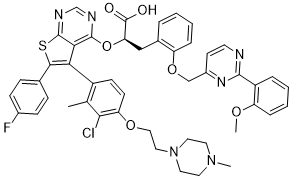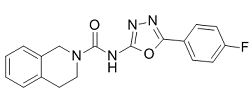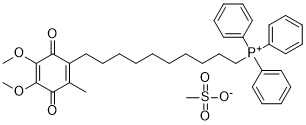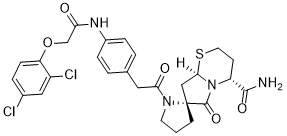A small exon is easily skipped and a large exon usually contains internal cryptic splice sites. The amelogenin gene follows that golden rule perfectly, as exon 4 is usually skipped. The exon 2b revealed in this study consists of just 39 nucleotides encoding 13 amino acid residues. As far as we know, it is the smallest exon among amelogenin exons detected so far. Although analysis of amelogenin gene sequence spanning intron 2 in several species did not identify a typical exon/intron boundary, there is indeed a region with a moderate sequence identity to exon 2b nucleotide sequence. Exon 6 is the largest exon of the amelogenin gene containing several internal cryptic splice sites that could lead to its further sub-division into four domains named exon 6A, exon 6B, exon 6C, and exon 6D. During the processing of amelogenin premRNA, one well-defined amelogenin splicing form contains the majority of N-terminal of exon 6 spliced out and played a role in enamel biomineralization and enamel organ epithelial cell differentiation. The splicing form of P.cinereus-50 discovered in present study only contains exons 2, 3, 5 and 7 with exon 6 completely spliced out. As far as we know, this is the first amelogenin splicing transcript in which the entire exon 6 sequence is spliced out. Structure comparison of the putative P.cinereus-50 with the LRAP splicing form revealed a similar secondary structure in which two potential helix regions existed: one on the C-terminus, the other on the N-terminus, implying the putative P.cinereus-50 is likely to function in a similar way as LRAP. Although different approaches have been used to explore the effect of exon 2b on the secondary and tertiary structure of putative P.cinereus-195, our results did not show a significant effect of exon 2b on P.cinereus-195 secondary structure; however HHpred prediction identified a few homologs/domains that are different from those of P.cinereus-182, indicating that exon 2b has an effect on the tertiary structure of putative P.cinereus-195, thus likely its functions.  The novel amelogenin transcripts and the unique exon 2b detected in the salamander will contribute to the understanding of tooth enamel evolution by revealing the conservation and divergence of significant exons of the amelogenin gene throughout vertebrate evolution. Discovery of additional amelogenin sequences will result in enhanced understanding of the origin and evolution of vertebrate teeth. Hepatocellular carcinoma is a common malignancy worldwide, but especially in China and other East Asian countries. Although survival of patients with HCC has improved due to advances in surgical techniques and perioperative management, long-term survival after surgical resection remains low due to the high rate of recurrence and metastasis. Although some clinicopathological features of HCC, such as tumor multifocality, vascular invasion and tumor size, are useful to evaluate the prognosis of HCC patients.
The novel amelogenin transcripts and the unique exon 2b detected in the salamander will contribute to the understanding of tooth enamel evolution by revealing the conservation and divergence of significant exons of the amelogenin gene throughout vertebrate evolution. Discovery of additional amelogenin sequences will result in enhanced understanding of the origin and evolution of vertebrate teeth. Hepatocellular carcinoma is a common malignancy worldwide, but especially in China and other East Asian countries. Although survival of patients with HCC has improved due to advances in surgical techniques and perioperative management, long-term survival after surgical resection remains low due to the high rate of recurrence and metastasis. Although some clinicopathological features of HCC, such as tumor multifocality, vascular invasion and tumor size, are useful to evaluate the prognosis of HCC patients.
Author: neuroscience research
By directly clamping to differentiate into any type of nerve cells and also cannot bind to the retina
However, transplantation of mesenchymal cells was neuroprotective and promoted regeneration of retinal nerve. In contrast, studies demonstrated that mesenchymal cells can achieve the neuroprotective effect via secretion of several immunomodulatory and neurotrophic factors, including TGFb1, CNTF/NT-3, and BDNF. By considering that hUCBSCs contain both the hematopoietic stem cells and mesenchymal stem cells, our observation suggest that immunomodulatory and neurotrophic factors may also play a neuroprotective role. In this study, the peak TUNEL-positive cells were observed at 72 hrs and a reduction appeared at 1 week post injury in the injury group. In contrast, the RGC amount progressively decreased with time. RGC may die after traumatic optic nerve damage through apoptosis, necrosis and degeneration. The lack of correlation between RGC amount and TUNEL-positive cells suggested that other causes, such as degeneration might also be responsible for the RGC loss. The most novel finding in this study is that transplantation of hUCBSCs interfered with ER stress-related proteins expression. Previous reports revealed that induction of ER stress-related proteins CHOP and/or GRP78 expression were involved in the tunicamycin or NMDA induced apoptosis in RGC in vitro and in vivo. Tunicamycin is an inhibitor of N-linked glycosylation. Reduction of the N-glycosylation of proteins causes an accumulation of unfolded proteins in the ER and thus induces ER stress. The accumulation of unfolded protein can stimulate GRP78 expression. GRP78 in turn works to restore folding in misfolded or incompletely assembled proteins. In addition, NMDA induces CHOP protein and apoptosis in the ganglion cell layer and the inner plexiform layer, suggesting  that ER stress may be a factor in retinal injury. In this study, both GRP78 and CHOP were stably expressed from 3 hrs to 1 week after optic nerve injury. However, transplantation of hUCBSC significantly AbMole Dimesna increased GRP78 expression and reduced CHOP expression at every time point. The increased GRP78 expression could restore folding in misfolded or incompletely assembled protein, therefore reduce apoptosis. CHOP is a central mediator of ER stress-induced apoptosis, and its expression under ER stress was reported to be up-regulated in proportion to the level of apoptotic cell death. However, our study revealed that CHOP expression does not progressively increase with time after retinal nerve injury. In contrast, transplantation of hUCBSCs significantly downregulated CHOP expression at every time point. It may be possible that decreased expression in the proapoptotic protein CHOP directly reduced apoptosis. Therefore, our study implicated that transplantation of hUCBSCs may regulate ER stress, and subsequently decrease apoptosis in retinal neurons. Repeatability, controllability, and detectability are critical characteristics of a novel nerve injury model. In this study, optic nerve injury was induced .
that ER stress may be a factor in retinal injury. In this study, both GRP78 and CHOP were stably expressed from 3 hrs to 1 week after optic nerve injury. However, transplantation of hUCBSC significantly AbMole Dimesna increased GRP78 expression and reduced CHOP expression at every time point. The increased GRP78 expression could restore folding in misfolded or incompletely assembled protein, therefore reduce apoptosis. CHOP is a central mediator of ER stress-induced apoptosis, and its expression under ER stress was reported to be up-regulated in proportion to the level of apoptotic cell death. However, our study revealed that CHOP expression does not progressively increase with time after retinal nerve injury. In contrast, transplantation of hUCBSCs significantly downregulated CHOP expression at every time point. It may be possible that decreased expression in the proapoptotic protein CHOP directly reduced apoptosis. Therefore, our study implicated that transplantation of hUCBSCs may regulate ER stress, and subsequently decrease apoptosis in retinal neurons. Repeatability, controllability, and detectability are critical characteristics of a novel nerve injury model. In this study, optic nerve injury was induced .
This study was conducted in a single tertiary medical without invasive therapies developed PD peritonitis
Whereas 30.4% of patients receiving these procedures with invasive therapies developed endoscopy-associated PD peritonitis. AbMole Indinavir sulfate Prophylactic antibiotics significantly reduced the incidence of PD peritonitis after non-EGD procedures with invasive therapies. Yip et al. have presented an incidence of 6.3% for postcolonoscopic PD peritonitis and a beneficial effect of prophylactic antibiotics on the prevention of these complications, although the result did not reach statistical significance. The International Society for Peritoneal Dialysis 2010 guidelines for peritonitis had accordingly recommended prophylactic antibiotics in PD patients undergoing colonoscopy. Our study demonstrated an incidence of 6.6% of colonoscopy-associated PD peritonitis. These episodes occurred in patients receiving colonoscopy and polypectomy without prophylactic antibiotics, implying a requirement for antibiotic prophylaxis. Gynecologic procedures are a rare cause of PD peritonitis, by which vaginal colonized bacteria or fungi may be spread into the peritoneal cavity during the procedure or manipulation. Although prophylactic  antibiotics are recommended for the prevention of colonoscopy-associated PD peritonitis in the ISPD 2010 guidelines, the advantage of prophylactic antibiotics in hysteroscopy has not been addressed. Our study showed that 5 patients who received hysteroscopy with prophylactic antibiotics did not develop PD peritonitis, whereas 5 patients among 13 undergoing hysteroscopy without prophylactic antibiotics developed posthysteroscopic PD peritonitis. This result suggested that antibiotic prophylaxis provides a protective effect on the development of PD peritonitis in patients undergoing gynecologic procedures. The ISPD 2005 peritoneal dialysis-related infection guidelines recommended ampicillin 1 g plus a single dose of an aminoglycoside, with or without metronidazole, given intravenously just prior to patients undergoing colonoscopy with polypectomy to decrease the risk of peritonitis. Various antibiotics were administered prior the endoscopic examinations in this study. One dose of 1g Ceftriaxone administration was used as prophylaxis before colonoscopy and none of the patients had endoscopyassociated PD peritonitis. Considering the normal flora in human gut, third generation cephalosporins may be appropriate choices for peritonitis prophylaxis. Gynecologic procedures also carry high risk of endoscopy-associated PD peritonitis. Enterococcal peritonitis and streptococcal peritonitis after hysteroscopy and IUD implantation were noted in our study. It may be appropriate that antibiotic regimen including an agent active against enterococcus and streptococcus. Clindamycin and first generation cephalosporin were used in our series and none of the patients developed peritonitis after these gynecologic examinations. There are several limitations in our study. First, the data were collected retrospectively.
antibiotics are recommended for the prevention of colonoscopy-associated PD peritonitis in the ISPD 2010 guidelines, the advantage of prophylactic antibiotics in hysteroscopy has not been addressed. Our study showed that 5 patients who received hysteroscopy with prophylactic antibiotics did not develop PD peritonitis, whereas 5 patients among 13 undergoing hysteroscopy without prophylactic antibiotics developed posthysteroscopic PD peritonitis. This result suggested that antibiotic prophylaxis provides a protective effect on the development of PD peritonitis in patients undergoing gynecologic procedures. The ISPD 2005 peritoneal dialysis-related infection guidelines recommended ampicillin 1 g plus a single dose of an aminoglycoside, with or without metronidazole, given intravenously just prior to patients undergoing colonoscopy with polypectomy to decrease the risk of peritonitis. Various antibiotics were administered prior the endoscopic examinations in this study. One dose of 1g Ceftriaxone administration was used as prophylaxis before colonoscopy and none of the patients had endoscopyassociated PD peritonitis. Considering the normal flora in human gut, third generation cephalosporins may be appropriate choices for peritonitis prophylaxis. Gynecologic procedures also carry high risk of endoscopy-associated PD peritonitis. Enterococcal peritonitis and streptococcal peritonitis after hysteroscopy and IUD implantation were noted in our study. It may be appropriate that antibiotic regimen including an agent active against enterococcus and streptococcus. Clindamycin and first generation cephalosporin were used in our series and none of the patients developed peritonitis after these gynecologic examinations. There are several limitations in our study. First, the data were collected retrospectively.
A Nucleus Morphology and Filter step was used to exclude objects mistakenly identified as nuclei
The same locations used for primary cilia AbMole Ellipticine analysis were found by referencing the annotated H&E slide. These areas of interest were exported as TIFF files from the Dmetrix scan files, and as JPEG files from the BioImagene scan files, and uploaded into Definiens Tissue Studio 3.0 Software. Tissue Studio 3.0 Software was tested for absolute agreement with manual hand counts performed by two separate investigators. Images from six normal prostate and six prostate cancer locations were blindly scored for nuclear staining of Gli1, where each nucleus was scored as either positive or negative. For each image, Tissue Studio 3.0 was used in conjunction to quantify the number of positive and negative cells/nuclei. A statistical test that is used to measure the consistency and absolute agreement of measurements made by different observers was applied to the data obtained for the six normal and cancerous prostate tissues. The intraclass correlation coefficient was determined as 0.7, using SPSS 19, which is considered strong agreement. For Ki67 analysis, some  patient tissue could not be used for analysis due to too many serial sections missing between the Ki67-stained slide and the H&E slide, making it impossible to locate the exact area used for primary cilia analysis. The number of patients used for cancer was 72, and the number of patients used for perineural invasion was 15. For the Ki67 analysis with Definiens Tissue Studio, a modified Nuclei solution was used. The epithelial/cancer and stromal compartments of cancer and perineural invasion areas were separately analyzed using the Manual ROI Selection segmentation tool, with a segmentation of 8. The hematoxylin and immunohistological threshold were set at 0.12 arbitrary units and 0.03 a.u., respectively. The IHC threshold was determined by identifying the lightest positively-stained nucleus in the sample set and using this value as the cutoff for positivity. From the exported results, positive indices were computed per tissue type per patient. Some patient tissue could not be used for ��-catenin analysis due to inadequacy of serial sections, or too many serial sections missing between the ��-catenin stained slide and the H&E slide, making it impossible to find the exact location. For normal, the number of locations utilized was 26, from 10 patients. For PIN, the number of locations was 19, from 13 patients. For cancer, 154 locations were used, from 64 patients. For perineural invasion lesions, the number of locations used was 23, from 11 patients. For the ��-catenin analysis with Definiens Tissue Studio, the percentage and intensity of nuclear staining in epithelial and cancerous tissue was acquired. Stroma was excluded from the analysis since ��catenin is mostly expressed in epithelial cells. For the analysis, a modified Nuclei, Membrane and Cells solution was used.
patient tissue could not be used for analysis due to too many serial sections missing between the Ki67-stained slide and the H&E slide, making it impossible to locate the exact area used for primary cilia analysis. The number of patients used for cancer was 72, and the number of patients used for perineural invasion was 15. For the Ki67 analysis with Definiens Tissue Studio, a modified Nuclei solution was used. The epithelial/cancer and stromal compartments of cancer and perineural invasion areas were separately analyzed using the Manual ROI Selection segmentation tool, with a segmentation of 8. The hematoxylin and immunohistological threshold were set at 0.12 arbitrary units and 0.03 a.u., respectively. The IHC threshold was determined by identifying the lightest positively-stained nucleus in the sample set and using this value as the cutoff for positivity. From the exported results, positive indices were computed per tissue type per patient. Some patient tissue could not be used for ��-catenin analysis due to inadequacy of serial sections, or too many serial sections missing between the ��-catenin stained slide and the H&E slide, making it impossible to find the exact location. For normal, the number of locations utilized was 26, from 10 patients. For PIN, the number of locations was 19, from 13 patients. For cancer, 154 locations were used, from 64 patients. For perineural invasion lesions, the number of locations used was 23, from 11 patients. For the ��-catenin analysis with Definiens Tissue Studio, the percentage and intensity of nuclear staining in epithelial and cancerous tissue was acquired. Stroma was excluded from the analysis since ��catenin is mostly expressed in epithelial cells. For the analysis, a modified Nuclei, Membrane and Cells solution was used.
Systemic lupus erythematosus is an autoimmune disorder with unknown
Our congenic breeding was successful in identifying a QTL associated with the development of spontaneous arthritis. When a fragment of DNA from the DBA/1 strain was introduced onto a BALB/c background, arthritis was delayed in onset and was less severe. The congenic strains provide a unique tool for evaluating specific genetic factor/s that regulates the spontaneous onset of spontaneous arthritis. The genetic mapping of QTL using a F2 population, especially with a relatively small population, usually identifies approximate locations of genetic loci for a complex trait. Using the congenic strains that we developed, the genomic region of the originally identified QTL has been redefined into a region that is downstream from the peak region of our original mapping. In our previous study, in our F2 mapping we used 137 microsatellite markers with initially 191 F2 and then 561 F2 mice. Within the 561 F2 population, there is sex ratio of 1:2 between male and female. This data emphasizes the importance of confirmation of QTL regions using additional breeding techniques including the development of congenic strains or other approaches. Understanding the molecular mechanisms underlying the phenotype of the congenic strains has two potentially profound AbMole Ellipticine consequences. First, it may enable us to identify novel pathways that contribute to the development of inflammatory arthritis. It has been recognized that IL-1 signaling is a key component of many forms of human inflammatory arthritis, in the development of joint erosions, and in development of osteoporosis. This data suggests that these cytokines may be coordinately regulated by genes within the QTL but further work will be needed to determine the  specific pathways involved. Study of the molecular basis of this QTL may identify a complementary approach to what is the most widely implemented biologic therapy for inflammatory arthritis in humans. Although we have not yet identified the causal gene/s within the QTL, those genes with polymorphisms and differential expression levels between BALB/c and DBA/1 deserve detailed examination in the future. The mouse model in this study has important implications for understanding rheumatoid arthritis in humans and potentially other human diseases. Liver fibrosis is a dominant medical problem with significant morbidity and mortality. The most commonly associated characteristic of fibrosis is excessive deposition of extracellular matrix proteins, including glycoprotein, collagens and proteoglycan. The excess deposition of ECM proteins disrupts the normal architecture and functions of the liver. Transforming growth factor b has been recognized as a most potent fibrogenic cytokine, which stimulates the synthesis and deposition of ECM components. After binding to the constitutively active type II receptor, TGF-b stimulates the Smad2/3 signaling by phosphorylating the type I receptor, which ultimately leads to liver cirrhosis, an end-stage consequence of fibrosis.
specific pathways involved. Study of the molecular basis of this QTL may identify a complementary approach to what is the most widely implemented biologic therapy for inflammatory arthritis in humans. Although we have not yet identified the causal gene/s within the QTL, those genes with polymorphisms and differential expression levels between BALB/c and DBA/1 deserve detailed examination in the future. The mouse model in this study has important implications for understanding rheumatoid arthritis in humans and potentially other human diseases. Liver fibrosis is a dominant medical problem with significant morbidity and mortality. The most commonly associated characteristic of fibrosis is excessive deposition of extracellular matrix proteins, including glycoprotein, collagens and proteoglycan. The excess deposition of ECM proteins disrupts the normal architecture and functions of the liver. Transforming growth factor b has been recognized as a most potent fibrogenic cytokine, which stimulates the synthesis and deposition of ECM components. After binding to the constitutively active type II receptor, TGF-b stimulates the Smad2/3 signaling by phosphorylating the type I receptor, which ultimately leads to liver cirrhosis, an end-stage consequence of fibrosis.